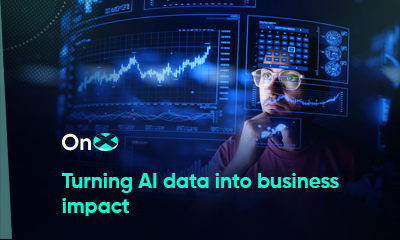
Major business restructuring events are a perfect time to assess and modernize an organization’s IT operations.
When a business matures digitally, the tendency is for applications, infrastructure, and other digital operations to bloat. Otherwise known as tool sprawl, this effect is keenly observed during business restructuring events such as mergers and acquisitions (M&A) or divestitures. Two or more companies blending IT portfolios highlight and increase inefficiencies in digital processes. Without thoughtful leadership, restructuring can lead to redundant tools and broken workflows.
However, the bright side of restructuring events is that they present an ideal moment to review and modernize an organization’s portfolio of applications. Many organizations seek mergers or acquisitions to update a legacy technology stack and stay competitive. The effort of updating apps and streamlining workflow is well worth the rewards—faster workflows and a game plan for digital transformation that increases profits and growth.
Benefits of modernizing applications during restructuring
Every stakeholder benefits tremendously from modern, cloud-compatible applications, whether representing the buyer, the seller, or a partner organization. Benefits include:
- Decreased redundant software and processes, which increases speed.
- Cost savings and efficiency.
- Greater data visibility and access.
- Streamlined IT infrastructure.
- Better UX and integration into refined dashboards and single-pane-of-glass controls.
Also read: Five trusted paths to application modernization and their benefits
Building out a modernization plan
Of the many business systems analyzed during M&A, applications are quickly becoming the most crucial systems for growth and efficiency. With careful study of your existing digital ecosystem, including factors such as functionality, integration, workflows, redundancies, inefficiencies, and cost-benefit analysis, your company can prioritize which apps to migrate and which to eliminate.
Creating a modernization plan includes the following steps:
- Discovery and assessment – Inventory current applications and their functions.
- Evaluate – Using a points system, rank applications based on:
- Mission-critical status.
- Integrability and functionality.
- How critical the data is to operations.
- The total cost of ownership.
- Generate the plan – After prioritizing applications, it is vital to generate a realistic timeline by working with IT leadership and central stakeholders. Establish milestones and identify performance metrics to monitor the success or failure of modernization efforts.
- Select a point person – Your company should appoint a team or point person to oversee the process. If working with a modernization partner like OnX Canada, this person will be the primary contact that your project manager engages with for quality control and ensures the project stays on track.
- Compliance enforcement – Modernized applications tend to follow data compliance regulations. If your organization is subject to compliance rules, double-check the latest codes or work with a vendor that understands compliance before the migration.
- Launch – Finally, the modernized application goes live. Your organization should prioritize ERP and mission-critical apps in the first wave. Afterward, with the experience gained, your team can plan migrations for lower-priority applications.
- Refine – User interaction with the modernized application may reveal areas to improve in future updates.
Learn more: Future-proof business operations with application modernization
Methods of modernizing applications
- Splitting up legacy applications into microservices involves breaking down an application into individual processes that can be utilized individually or holistically.
- Cloud migration transplants the entire application into a cloud environment. Some methods do not require extensive re-coding, but a great deal can be gained by rewriting an application to be cloud native.
- Integration via API can create dynamic workflows between other applications and processes.
Outsourcing modernization
Migrating a single legacy application can be overwhelming for many organizations, let alone the digital ecosystems of two newly merged companies. Navigating the maze of tool sprawl and legacy workflows requires significant time and effort. Choosing a highly qualified modernization partner can take pressure off your IT team and speed up the migration timeline by guiding them through vetted processes.
OnX has led our clients through thousands of digital transformations, including modernizing applications, cloud solutions, disaster recovery implementation, and malware prevention. Our time-honored approach can lead your company through digital transformation to aid you in achieving your mission-critical objectives.
Contact us to learn more.















